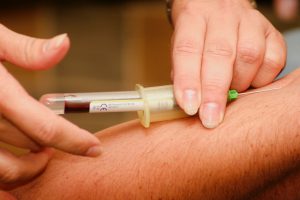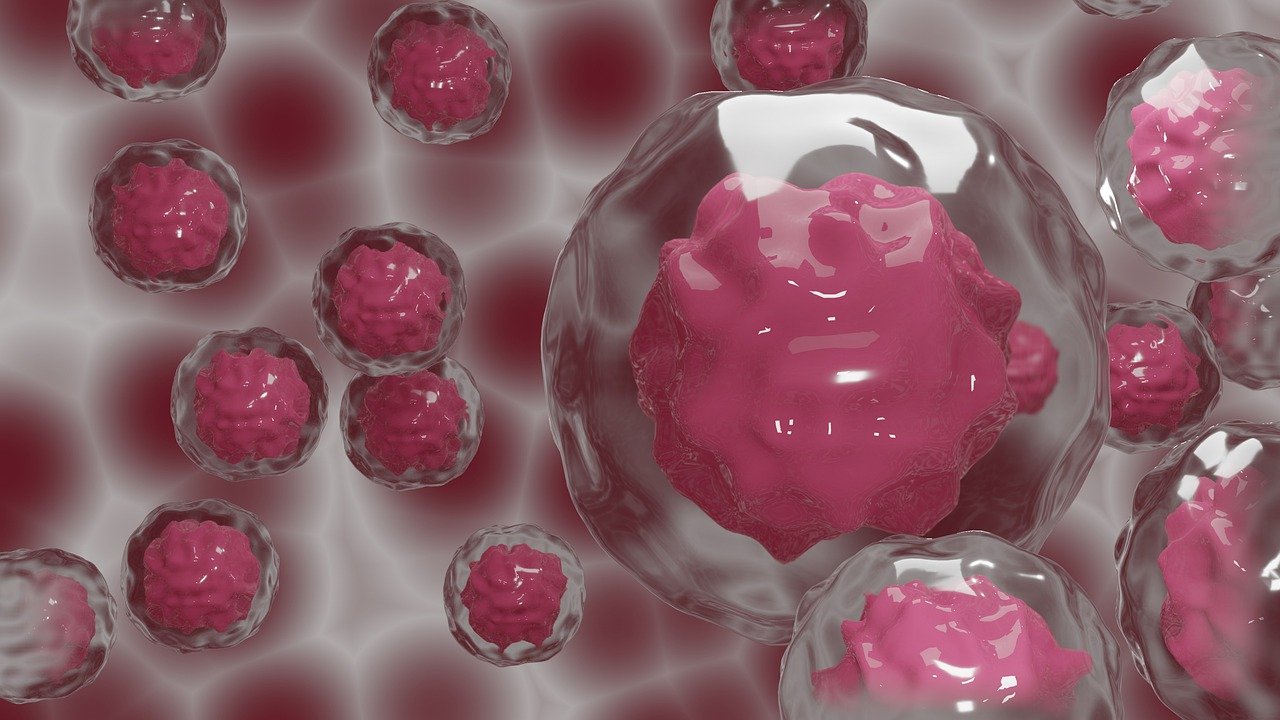I had a request come in a while ago for this one, and I’m excited to finally get to it! CTC (circulating tumour cell) tests are something that I have utilized since the beginning to achieve two important goals: monitor my response to my integrative protocol during treatment, and now to monitor and watch for the beginning of a potential recurrence. In this post, I will get into all aspects of CTC tests including what the heck CTCs are, what these tests are all about, why you might want to consider including them in your protocol, and how to make the best use of them, plus my own personal experience with them. Let’s do it!
 What are CTCs and why should I care about them?
What are CTCs and why should I care about them?
As I said above, CTC stands for circulating tumour cell. As we all know, everyone has cancer cells floating around their body, and what mainly stands in the way of everyone subsequently developing cancer is our immune system finding and getting rid of these cells. There are many, many factors that contribute to the development of cancer, factors that have cancer-promoting effects such as weakening our immune system, producing too many cancer cells for it to take care of, or causing other issues that overburden and “split the focus” so to speak of our immune system. The end result though is the same: a cancer cell goes undetected, finds a nice cosy spot somewhere to set up shop, and then goes about replicating endlessly and developing into full-fledged cancer.
CTC tests then are looking for cancer cells in the bloodstream. CTCs can have many different receptors and markers, and some CTC tests can tell you which treatments and compounds will work best against cells with each receptor and marker. But there are two main types of CTCs that are important to know about, cytokeratin positive and cytokeratin negative cells. Cytokeratin is a protein that is found on epithelial cells and that is present in higher amounts on the cells of epithelial, solid-tumour cancers such as breast, prostate, lung, and brain cancers [1]. Cytokeratin positive (CK+) CTCs then are circulating tumour cells in which cytokeratin can be detected. The presence of any CK+ CTCs indicates that a patient has an active or dying tumour and that the CK+ CTCs have sloughed off of said tumour, since solid tumours have epithelial cells and cytokeratin on those cells is present in higher amounts.
Cytokeratin negative (CK-) CTCs are of course CTCs where no cytokeratin is found to be present. CK- tumour cells have been found to be more aggressive, and their presence in higher numbers is often equated with shorter progression-free survival rates [2]. CK- circulating tumour cells detected with CTC tests could mean that they are a cancer stem cell, and cancer stem cells are very important to tackle. “Cancer stem cells are now thought to be responsible for cancer initiation, progression, metastasis, recurrence and drug resistance” [3]. They are called cancer stem cells because the theory is that they act like our healthy stem cells, but instead of renewing and sustaining our organs and tissues, cancer stem cells reproduce themselves and sustain the cancer [4]. This theory would explain why tumours often regrow or recur after treatment, because while the tumour cells have been killed, the stem cells have not, and they act as a reservoir of cancer cells from which the tumour can begin again (like chopping down a weed but not removing the roots and having it therefore reappear a few days later).
This means that they are harder to get rid of and, unfortunately, can do the most damage. So, it can be very beneficial to find out whether these guys are lurking beneath the surface so that you can employ treatments and compounds that target them.
 Okay, so how do I discover these suckers?
Okay, so how do I discover these suckers?
The way to discover your CTC numbers are to do a CTC test, and there are a few different options when it comes to these. Some CTC tests will give you results that differentiate between how many CK+ and CK- cells there were present in the blood sample, while some will just give you an overall CTC number. Some tests also allow you to add the option of looking for the receptor status of any CTCs they find (such as hormone receptors like ER and PR or others like HER2, which makes it easier to determine whether they came from your original tumour or elsewhere) as well as testing for which common cancer mutations are present within your CTCs, both of which can give valuable insight into which treatment options will work best for your specific cancer, those which will target the receptors and mutations your CTCs have.
These tests also test for ctDNA, fragments of tumour DNA that make their way into the bloodstream following cell death at the tumour as new cells grow, necrosis of the tumour, or damage to a CTC in the bloodstream. This information can help guide your practitioner by indicating how well your cancer cells are responding to your protocol; a decrease in both CTCs and ctDNA as well as an increase in CTC fragments (pieces of CTCs that have been destroyed) indicate a good response to what you are doing. Conversely, an increase in CTCs and ctDNA often indicates the presence of cancer, a recurrence of a previous cancer, or that a known cancer is not responding to the current treatment regime.
Let’s dive more deeply into the three major options.
Biocept [5]
Pros – The Biocept is a popular choice among practitioners for their advanced technology, their more discerning identification of what is a CTC and what is not, as well as the fact that this test automatically identifies whether any CTCs are cytokeratin positive or negative at no additional cost. They also offer the option to add on receptor identification as well as genome sequencing to identify the mutations and biomarkers present in your CTCs to help guide treatment decisions, but there is an additional cost for these. As a bonus, they have a great customer care team, and they also offer tests at much reduced costs for those who don’t have insurance or whose plans won’t cover it.
Cons – Because they are more discerning, some have criticized Biocept for missing CTCs and reporting decreasing or stable numbers while cancer is actually present and/or growing.
The Biocept will run you about $600 CAD, and the price will increase if you do add-ons.
Research Genetic Cancer Centre (RGCC) [6]
Pros – Also called the Greece Test, this test goes beyond just CTC and ctDNA identification. Like Biocept, they provide the option to do receptor testing and a genomic analysis of the CTCs and CSCs (cancer stem cells) to determine the mutations that could be at play in promoting cancer growth and spread. This test though also provides the option to do cytotoxic testing to determine which of 50 chemo drugs and 50 natural substances will be most effective against your CTCs and CSCs to help you design a protocol unique to you and most effective for you.
Cons – As the most expensive of these options, it could definitely be prohibitive for some. This is the reason why it’s the only one from this list that I haven’t done personally, though I know many people who have and found it extremely helpful, especially when making treatment decisions. If you can swing it, it seems to be worth the cost. The regular CTC testing is about $1400 CAD, and if you also get the substance sensitivity testing, it shoots up to about $3500 CAD.
Maintrac [7]
Pros – While the previous tests put an emphasis on other things like determining biomarkers and genomic sequences in addition to CTC numbers, Maintrac’s main goal is the observation of CTC numbers as a way of monitoring response to treatment and, after treatment, as a way of keeping an eye out for a possible recurrence. Like the others, you also do have the option of adding receptor testing to your regular CTC identification, and if the numbers are not responding to treatment, there is the possibility of testing other substances directly on the circulating tumor cells to determine if therapy-relevant properties are exhibited in the tumor cells, therefore allowing you to shift your protocol accordingly to those therapies that will be helpful against those properties. The Maintrac is also less discerning than the Biocept when identifying what is a CTC and what is not. You get higher numbers, but you are less likely to get a false negative (erring on the side of caution so to speak).
Cons – Some don’t like that the Maintrac is less discerning, and it has been criticised for that. Funnily enough, this is the opposite to Biocept, which has been criticised for being too discerning and giving false negatives. So, whether this is a con or not really comes down to your personal preference/opinion and whether it would be worse for you to get a false negative or a false positive. Maintrac is also not as advanced in their substance and genomic testing as Biocept and RGCC, but again, if you aren’t looking for these options and just want your CTC count monitored, this wouldn’t necessarily be a con.
The basic Maintrac is $590 CAD, and it increases with each add-on, like estrogen receptor identification.
 Alright, I’m ready to do a CTC test! How do I go about it?
Alright, I’m ready to do a CTC test! How do I go about it?
All of these tests are done by liquid biopsy, which is a fancy, scientific way of saying a blood draw. Your oncologist (if they will do it), ND, or integrative practitioner can order test kits directly from all three of these companies. You visit their office where 2-3 vials of blood are drawn, packaged, and sent back to the lab, where they are tested. Your healthcare practitioner should get the results 2-3 weeks later. It’s pretty easy honestly!
These are tests that must be ordered and collected by a healthcare practitioner, and so you can’t order a kit yourself. If you don’t currently work with an ND or integrative doc, the hardest part might be convincing your conventional oncologist to order the test, as many won’t because they aren’t considered to be part of the standard of care, especially here in Canada where healthcare isn’t privatised. You can find information on the websites for all three companies that you can take to your oncologist to help inform your conversation with them, but if they won’t budge, then your best bet will be finding an ND or integrative doctor in your area who offers the test or will order it for you if they don’t currently offer it. These companies also offer customer service where they will have a conversation with your healthcare practitioner about the benefits of these tests, how they work, and how to read the results, so that can help with the convincing as well.
In the US, many insurance companies do cover the cost of at least one of these tests (sometimes they will cover it from one company but not from another), but in Canada, it’s more difficult to get covered. Some of these companies, like Biocept, do offer price reductions for those who don’t have coverage, so after you pick which test you want to do, contact the company and enquire about financial aid if the regular cost is prohibitive.
 How do I best make use of a CTC test?
How do I best make use of a CTC test?
The scariest thing about cancer is that it can be growing for years without us knowing, and some of these companies tout their tests as a way to know whether you have cancer or not. While this isn’t necessarily false, it’s not the whole picture and it’s not as black and white as that. The technology is always developing and there is still debate around the accuracy of these tests; like any test, nothing is 100% certain. Yes, they can definitely alert you to cancer in your body, but they can also miss it. Yes, sometimes people will get decreasing numbers or a zero and they will still have cancer or it’s progressing. Just like my mammogram that came back negative two weeks before my diagnosis even when I could literally see my tumour when I pressed my skin down, nothing is a certainty unfortunately, even conventional tests/scans.
It’s best to treat CTC tests as what they are: a way to gather more information for you to consider, but not to treat them as the final word. They provide a piece of the puzzle, a way to gather more information that you can use to guide your healing choices. Use them to help you make your treatment and protocol decisions, monitor your response to your protocol and treatments so you can make adjustments if the numbers aren’t going down, and to monitor for a recurrence after treatment to make sure your risk reduction protocol is working. Just because I get a stable result on my CTC test doesn’t mean I consider myself out of risk and stop my protocol or my lifestyle changes. If the numbers shoot up really high, I would know that something is potentially wrong and that adjustments to my protocol need to be made, and if they still don’t go down and keep going up, I would want to go to my oncologist for further screening, just like I would if I got any other warning signs or symptoms. If the numbers stay the same, it means I just keep doing what I’m doing, including continuing with my other screenings (annual MRI and thermography), always being mindful though that while low numbers or a 0 are a good sign, that no test is 100% accurate. I don’t take it as the final word that I’m cured or that I have a recurrence; it’s just another way to gather more pieces of the puzzle and potential insights and maybe get an early heads up if something is wrong.
Most practitioners suggest that you get a CTC test done every 6 months if you are in active treatment and once a year if you are monitoring for recurrence after treatment. You are looking for your numbers to stay stable or, even better, to decrease. Although it’s exciting to get your numbers to 0 or low, you have to keep getting the test done and staying consistent with your protocols, because after treatment is over, this is a monitoring test, just like your annual scan; you have to keep checking in to make sure the numbers are still stable and aren’t shooting up, which would be an indication that you need to adjust your protocol and retest, or even go for additional testing or scans with your oncologist if they really increase a lot.
Once again, these tests are not designed to screen for cancer in the sense that you couldn’t be diagnosed from them. They are intended to provide information to clinicians about the presence of CTCs, ctDNA, and other biomarkers from the CTCs. These results assist healthcare practitioners in understanding the status of the disease (whether it is responding or, after treatment, whether it is recurring) and in making decisions on current and future therapy.
 What do I think about which one to choose?
What do I think about which one to choose?
I’ve said that fans of the Biocept say that the Maintrac identifies CTCs too liberally and includes cells in their count that they shouldn’t, while fans of the Maintrac will say that the Biocept is too discerning and filters out cells that they should be including in their count, and so the numbers are therefore inaccurate. I’ve done both and see the benefits of both.
The Biocept, man did it feel good to get both numbers down to zero. It really made me feel as though I was truly NED, not just on an observable level by having no tumours, but on a cellular level too. The Maintrac seems a little more realistic, because it seems almost impossible that we wouldn’t have some cancer cells floating around. The difference to me seems to be that the Biocept is looking for cells that would only show up in those who have or recently had cancer, while the Maintrac looks at all cancer cells, including those that everyone has floating around in them all the time. For this reason, I see benefits to both tests and have gone back and forth between them.
The RGCC is similar to these two, but it is definitely the most popular for testing the chemo and natural substance sensitivity of your specific cancer cells and it would be my choice if I was looking for this testing option. If you are planning on getting other types of testing through RGCC like the substance test, you can tack on a CTC test and do both at once, otherwise, Biocept or Maintrac may be better options for their price.
Like everything in your protocol, it’s a personal choice and completely your decision. But, if you do decide to add CTC tests to your protocol, which one you do is really up to you and whether you want to test other things like receptor status or substance sensitivity and what your budget is. Whichever one you choose, it’s best to do the same type at least twice in a row so that you can get a control and then retest to see the progress, but you can always do what I did and do one of them a couple times before switching to another to see what it’s like.
 And finally, what’s my own personal experience with these tests and my thoughts on their usefulness?
And finally, what’s my own personal experience with these tests and my thoughts on their usefulness?
Well personally, they are something I would recommend other people do, even though they may not always be reliable. On any cancer healing path, but particularly an integrative one, when we’re feeling negative, it can be really easy to question all that we’re doing, but recently, it was reinforced for me why I do these tests. I currently do a Maintrac once a year, mostly because that’s the one my integrative MD offers right now. The first time I did it, a few months after my surgery, the numbers were 650. The next time I did it six months later, it had dropped to 250 and has stayed there for four years. This year, for the first time, the numbers had jumped back up to 550, and I of course panicked.
But upon speaking with my integrative doc, I felt a lot better. A clear indication of a new tumour is usually a 10x increase he said, and mine was just 2x, which at worst could mean the very beginning of microscopic disease versus a full-blown tumour. Essentially, if there is any disease starting to form, it wouldn’t be detectable on a scan, and so there would be no way for me to know about it, save for the CTC test. If I wasn’t doing CTC tests, I would have had to wait for a solid tumour to form and be detectable on a scan to know that something needed addressing or adjusting. Because I know this, thanks to the test, I can adjust my protocol for a few months and take care of the buggers now when they are much easier to deal with than when they have formed a tumour.
It is also possible that it was a false positive, which sure would feel like unnecessary stress, but I personally would much rather get a false positive and at worst end up doing a bunch of things that are good for me anyway, even if they weren’t strictly necessary, than not know there was an issue until I had an actual recurrence. That’s just how I feel about it; you may decide that the stress and expense of one more test isn’t worth it, which is totally okay and totally your call. But I hope that this has at least helped you to decide one way or the other whether CTC tests are something you want to add to your protocol.
No matter what you choose, just keep choosing what is right for you 🙂
If you have any questions at all about CTC tests and my experience with them, don’t hesitate to comment below this post!
Happy Healing ❤️
…..
References
- Cytokeratin – https://www.cancer.gov/publications/dictionaries/cancer-terms/def/cytokeratin
- Clinical relevance of cytokeratin-negative circulating tumor cells. – https://ascopubs.org/doi/10.1200/jco.2011.29.15_suppl.e21101
- STEM CELL AND CANCER STEM CELL: A Tale of Two Cells – http://www.cellstemcell.org/index.php/PSC/article/view/124/439
- The Stem Cell Theory of Cancer – https://med.stanford.edu/ludwigcenter/overview/theory.html
- For more info on the Biocept – https://biocept.com/
- For more info on the RGCC – https://www.rgcc-group.com/
- For more info on the Maintrac – https://www.maintrac.de/En/maintrac/?lang=EN




I already do CTC tests at RGCC. level at 2 months after surgery was 3,8 in 7,5 ml. in 9 months it dropped to 3,4. just had surgery, did not want to do anything else except ajusting my lifestyle, food, stress level , vitamins, etc.
I am very curious what you do to stay healthy!
Ooo that is a very long answer indeed! It’s varied over the years, depending on where in my healing journey I was, but these are the basics (of course, please remember that I’m not a doctor or naturopath, and you should always check with your healthcare team before adding anything new to your protocol).
The most important thing you can do is find out where things are breaking down FOR YOU. I would highly recommend some genetic testing like Nutrition Genome or SelfDecode. Both are a few hundred dollars each, but they will tell you your strengths and weaknesses for areas like hormones, DNA repair, detoxification, etc., things that are really important to address for cancer. I go into both of these tests in detail in my “Clarity in the Cancer Chaos” course. The reason some things work really well for some people and they swear by them is because whatever it supports is what THEY need, what their weaknesses are. Those may not be the same for you and may not have been a factor in the development and progression of your cancer, so that’s why you may find that they don’t work for you. Discovering what YOU need through testing is key. For the “at some point” list, I would do hormone testing like the Dutch test, heavy metal testing, and gut testing, but you will need someone to order those for you. DNA testing like Nutrition Genome or SelfDecode is the place to start because it gives you a comprehensive look under your hood and you can also order it and read the results yourself for both of the tests I mentioned. I have done both, Nutrition Genome and then loaded my same raw data into SelfDecode. I think SelfDecode is perhaps the more comprehensive in terms of the info they generate for you, but both are helpful.
And I have found that there is often a mental and emotional component to getting cancer, so there may be work for you to do there. Forgiveness (both asking for it and granting it) was massive to my healing, as was learning that I didn’t think I was worthy of love just the way I was without changing and without needing an “excuse” like cancer to receive it. I didn’t even realize I thought this, that’s how deep I buried it. It is amazing what comes up and what we can then heal when we go digging, physically but mentally and emotionally too.
And then some other basics that have worked for me: meditation, vitamin D, vitamin c, vitamin k2, vitamin a, vitamin b complex, reishi mushroom, turkey tail mushroom, probiotic, turmeric (curcumin supplement and fresh in tea and meals; getting one with black pepper in it is key for absorption), zinc, berberine for blood sugar control, sulforaphane (supplement and by eating fresh broccoli sprouts, really easy to grow yourself in a jar), DIM and I3C (but you need to do hormone testing to see if the phases of estrogen metabolism they help with are ones that you need support in, otherwise it’s just a waste of money and can cause problems instead of helping), coffee enemas, colonics, high dose vitamin C IVs, mistletoe injections, infrared sauna, fasting (intermittent fasting every day and one 24 hour water fast a week), diet overhaul (I try as much as possible to have no sugar, dairy, wheat or refined grains; 3-4 days a week are plant-based, I have some organic chicken or wild salmon the other days; you have to find the diet that works for YOU, some swear by keto, some by vegan, I do a flexitarian paleo diet), improving the quality of my sleep, stress reduction/dealing with stress better, and exercise at least 4 days a week (mostly I do walking, yoga, rebounding, and then I have a short HIIT workout I do twice a week). I drink lots of water and green tea, and I have also gone through periods where I drink Jason Winters tea and Essiac tea as well. You can google those last two teas very easily or join our Facebook group and search for Essiac there 🙂
This is a lot; sorry if I overwhelmed you! Let me know if you have any questions 🙂
Thank you for this explanation. I got a CTC Maintrac test from Germany through my naturopath and am having trouble interpreting the results. The report says “in the sample (1 ml) they found 50 potential tumour cells. Then it says “in circulation (51) (in millions): ,25.
Do you have any idea what this means? Is it a lot? A little? I’m so confused.
P.S. I have metastatic breast cancer and am in Canada as well.
Hi Vivi,
Your naturopath should be able to confirm this with you, but from what I remember from my own Maintrac tests, they extrapolate the amount that was in the sample to estimate how many in total would be in circulation in your body, hence 50 in the sample = an estimated 250,000 (0.25 million) in total in circulation in your body.
In terms of it being a lot, don’t quote me on this, but again from what I know from my Maintracs, no, it isn’t a lot. The results come in 50’s (0, 50, 100, 150, and so on), so other than 0, 50 is the lowest result you can get. When I first tested after I was diagnosed, I had 650. After 6 months of working on things, that number had dropped to 250 and it stayed there for years. I had a rise in the fall of 2021 to 550 and intensified my protocol from the maintenance one I had been on. Four months later, my next Maintrac came back at 100, the lowest it had ever been! So, comparing to my results, 50 is low. What I have gleaned though is that it is more important to see how your individual numbers do over time, whether they jump up or stay stable compared to whatever your last test said. I have been NED since my treatment, and 250 was stable for me. You have metastatic and your baseline number is 50, so it seems to be more about how that number performs over time versus what that number actually isk, if that makes sense? I would say lower is better obviously though! For your info, at the time of my rise, my integrative doc told me that the number needs to go up by 10x before they are concerned about a new tumour, so for me, it was a potential early heads up that things were slipping out of whack.
If you want to know more about the Maintrac’s pros and cons and the best way to use CTC tests in your healing journey, check out this post I did on various CTC tests: https://soliscancercommunity.com/ctc-tests/
ctDNA test by Signatera (it’s in the US, but Lifelab also offers it here) —- have you gone through this one?
I haven’t personally done it because it must be approved by your healthcare provider and I know my oncologist won’t approve it. It’s different in the states though where everything is private, so I know a lot of people there who use Signatera and like it. With RGCC’s popularity decreasing dramatically (big issues with reliability of the results), Signatera has become more popular. I just discovered this Facebook group about the test (https://www.facebook.com/groups/1655633044886002/) and am waiting on my request to join to be approved, so I can’t tell you what it is like yet but I’m sure there would be people there who could answer any questions you have about what it is like to do the test.